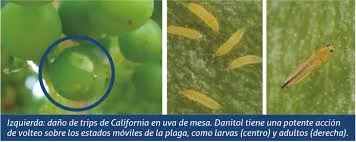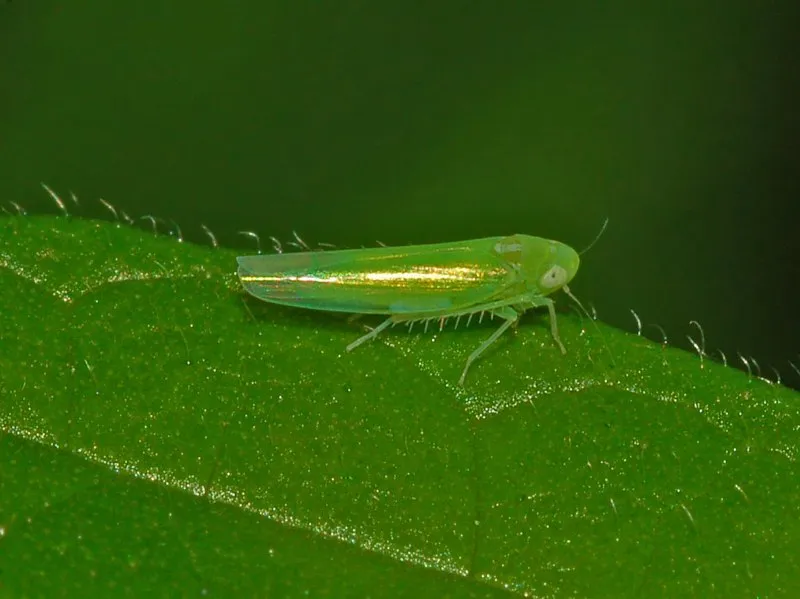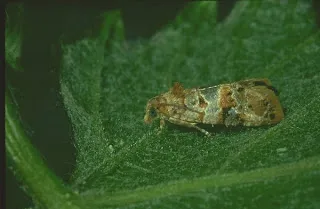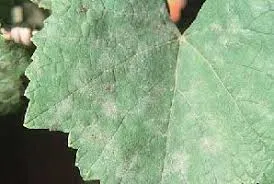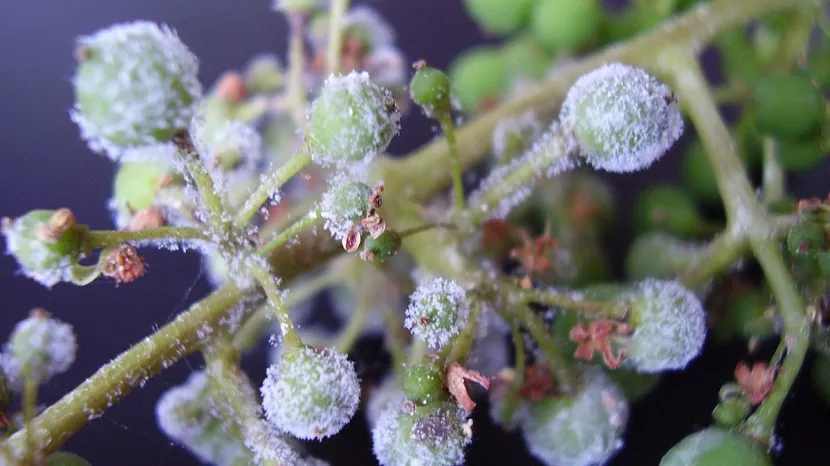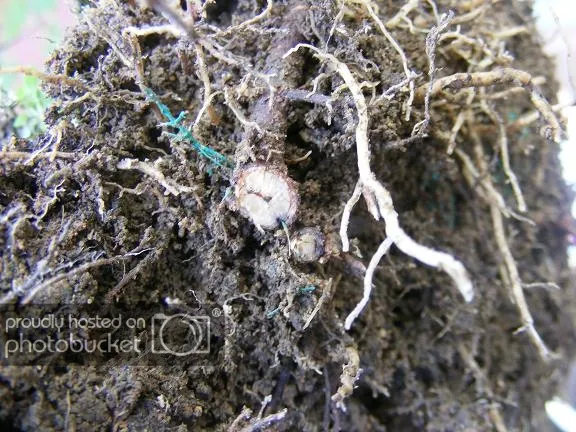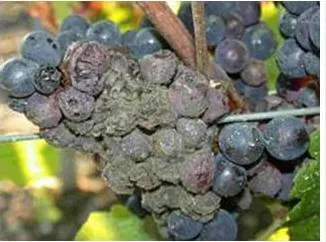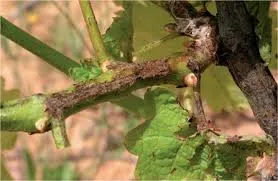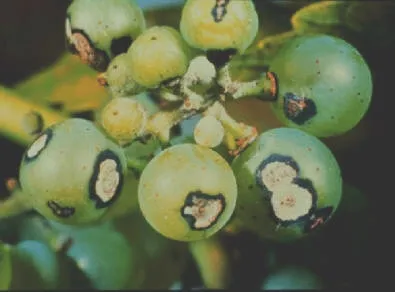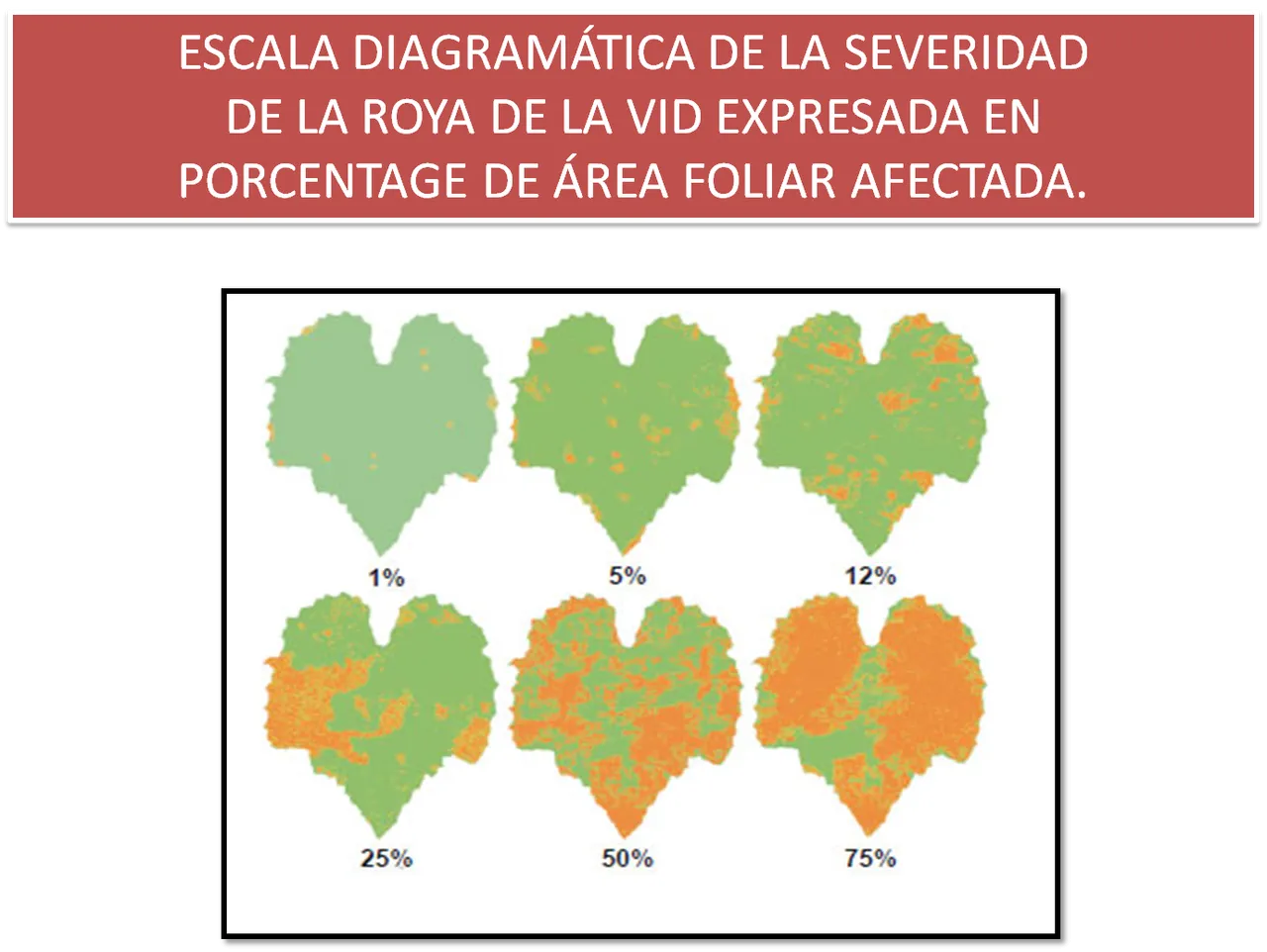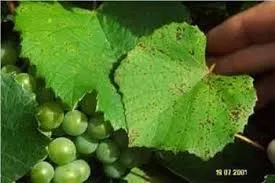
The vine or grape its cultivation is well known. Today we are going to talk about the problem that in the majority of those who cultivate grapes present such as pests and diseases. For this reason in this article we will know the problems that we can find when we grow grapes, use prevention and action that can remove that evil from our crop by choosing the best treatment.
Vine pests
Trips (Frankliniella occidentalis)
Wounds are produced on fruits that worsen as the berry enlarges. Browning in the epidermis is common.
Green mosquito (Jabobiasca lybica)
Piral (Sparganothis pilleriana)
The caterpillar feeds on the young leaves, then attacking the young clusters, which it weaves together with its fabrics.
Cluster moth (Lobesia botrana and Eupoecilla ambiguella)
The damage caused by the cluster moth causes weak impacts on the crop, but is a source of acid and bacterial rots. Rots alter the quality of the wines and can produce toxicity in foods based on this raw material (Ochratoxin A).
Phylloxera (Dactylosphaera vitifolii)
On the leaves very characteristic galls are produced that turn red. This is a consequence of the introduction of the phylloxera stylet.
Aphid (Aphis gossypii)
It is very polyphagous and feeds on vegetable juices. On the skin there are stings that finish necrotic and depreciate their commercial value.
MAIN DISEASES OF THE VINE.
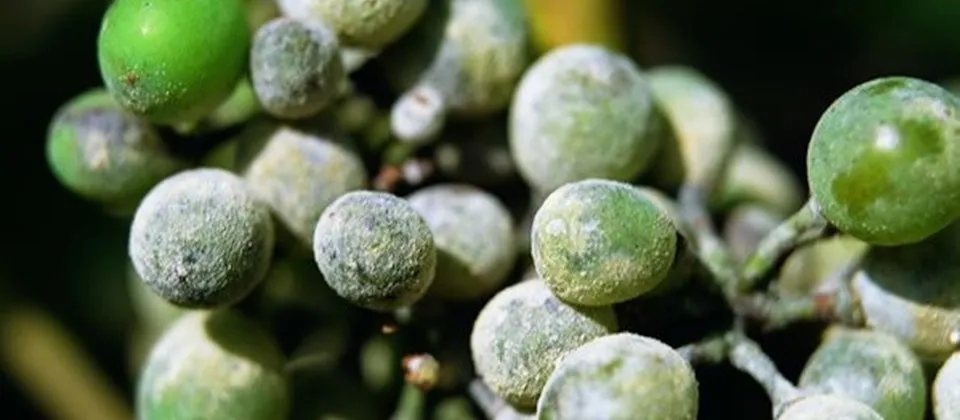
SOURCE
The powdery
It is, without a doubt, one of the diseases that has more importance in the cultivation of the vine. It is present in all the productive areas of grapes and, above all, in favorable conditions.
Damage to leaves
On the leaves appear a kind of whitish powder that covers the entire leaf area, both on the underside and in the beam. With time and the advance of the disease, the leaves wrinkle around the edges and curl up.
However, powdery mildew not only affects the leaves, since it covers all the vine organs: stems, leaves and clusters, which causes different symptoms on them.
Damage to stems
It produces necrosis in the epidermis, forming a net over them. It produces desiccation in shoots, affecting the vegetative development of the strain and reducing its development.
The powdery mildew affects more severely when there is presence of mycelium in the winter buds, which goes from sprouting to the formation of berries (with pea size). If there is no mycelium in the cold season, it is important to control the progression of the disease from the beginning of flowering to the formation of berries (pea size).
Treatments
When powdery mildew is endemic in a vine zone, a specific program must be carried out to control it. The treatment period starts from the extended clusters (beginning of lofración to beginning of veraison) with applications of systemic or penetrating active materials, every 10-12 days.
Before this period, it is necessary to apply materials that slow down development or act as a preventive, such as sulfur in dusting.
In this type of disease, preventive treatments are very important to slow down or slow down the appearance of the disease in the crop.
Treatments recommended by the Ministry of Agriculture for the control of powdery mildew on grapes.
Mildew of the vine (Plasmopara viticola)
It is one of the great diseases of the vine and well known to all farmers who grow this species. In addition it is also one of the most serious and most complicated to solve. It is originated by the fungus Plasmopara vitícola Berl and of Toni and like in the powdery mildew, they appear in climates with warm temperatures and high humidity.
Mildew is a fungus of internal development, so its treatment is more complicated than other types of diseases. The spores, when placed on the leaf, emit a germinative tube that penetrates through the stoma and colonizes the interior of the crop.
Leaf symptoms
The clear example to recognize the appearance of mildew is to observe on the leaves a kind of oil stains on the beam. However, if we look at the underside, we will not find those spots, otherwise there will be a whitish powder. These "spots" eventually necrotic and defoliate the vine.
However, mildew also attacks all the organs of the plant (as in the case of powdery mildew).
Symptoms on stems
On the stems it produces a necrosis, especially when they are tender. It produces a partial or total drying of the stem
Symptoms in cluster
The problems of mildew in the bunch are the worst, from the economic point of view. The separated clusters until the flowering turn out to be very sensitive to the attacks of this fungus, for which a control of the late disease supposes the loss of a great production .
If the clusters are attacked in the spine, they are slowly curved until they dry (partial or total). If the disease extends to the peduncle, it can affect the entire cluster.
When the berries are in formation (pea size), the disease manifests itself with a wrinkling and its subsequent drying, even when there is no presence of mycelium on them (mildew larvae).
Treatments
It is necessary to detect and track the spores in winter. In addition, we must pay attention to the first infections (the oily spot on the leaf), which warn of an advance of the disease.
The treatment consists of systemic or penetrating products when the berry has not yet reached the size of a pea. From here, until the beginning of the veraison, it is necessary to continue treating with penetrating products or fixed by means of waxes.
These are the treatments recommended by the Ministry of Agriculture, for the control of mildew (Plasmopara viticola).
Root rot
When the soil harbors too much moisture content, problems of vine diseases may arise, such as root rot. This disease is caused by Armillaria mellea Vohl and Rosellinia necatrix Hartig.
Symptoms: we observe stems and short shoots in the grapevine, as well as the leaves, which have also lost the characteristic greenness. The roots blacken and rot, although this measure is not visually appreciable as a diagnosis since we would have to tear the plant to observe it.
A possible solution is to increase the drainage capacity of the soil, whose impermeability is the source of the problem.
Gray rot (Botrytis cinerea)
It is one of many diseases of the vine although it is not specific to this crop as it can also be seen in others of different nature. It is caused by the fungus Botrytis cinerea and is usually manifested in plant organs such as budding leaves and inflorescences. The conidia have a great capacity of germination between 1 and 30 ºC and need an environmental humidity around 90%.
Symptoms: new or young shoots acquire a brown hue that necroses and dies over time. Brown lesions are located on the leaves located at the edges or at the tip. The fruit, in turn, turns brown and is covered with a kind of grayish powder.
Chemical treatments recommended for the control of Botrytis cinerea.
Vine excoriation
This disease is caused by the fungus Phomopsis viticola and currently is not as important as any of the previous cases because it needs special moisture conditions for development (high frequency of rainfall).
Symptoms: On the leaves there are some dark or blackish spots that have a ring or edge yellowish. In addition, brown necrosis appears at the base of the shoots and the bark easily cracks.
Anthracnose of the vine
Among the diseases of the vine we also have another protagonist, originated by the fungus Glocosporium ampelophagum and Sphaceloma ampelinum, and produces often confusing lesions because sometimes the affected parts are together and other times the symptoms are isolated.
Symptoms: on the leaves there are circular spots whose margins have a color between brown and blackish. Over time, these spots acquire grayish wholes and dry up. Interestingly, that hole remains in the blade, since it is not usually defoliate, so it seems as if someone had trained with his gun pellets on the vine.
Anthracnose of the vine
Critical period for disease control
You have to pay special attention to the gray rot when the cluster reaches around 7º degrees Brix of sugar. From here, we must follow the disease until the collection.
Sometimes the presence of gray rot has occurred when the bunch is visible until it gets the size of a pea.
METHODS FOR THE CONTROL OF DISEASES
1.- Standard method: 4 preventive treatments in the following phenological stages:
⦁ Cap (set).
⦁ Pea-sized grains (bunch enclosure).
⦁ Start of veraison.
⦁ 21 days before collection.
2.- Method 15-15: treatments from the beginning of flowering until 21 days before harvest, with a minimum interval between treatments of 10 days.
3.- Epi method: perform a variety-plant-climate-disease study to achieve an exhaustive control of the disease. A complicated and individual system for each plantation.
Rust of the vine
Grape rust is caused by the fungus Phakopsora euvitis whose basidiospores usually germinate at high temperatures, above 24ºC and high humidity. However, it is affected by direct light, which is why it is common for crops that have not received pruning.
Symptoms: reddish spots appear on the leaves on the leaves, preferably on the adult leaves. When the infection is important, premature defoliation of the vine occurs.
And, of course, we do not leave tinder on the list, a disease that, to this day, has no cure. However there are some interesting remedies to alleviate or prevent their appearance. We present them to you in the article about the vine tinder.
Source:
https://www.agromatica.es/las-enfermedades-de-la-vid/
Thank you for taking a few minutes to read my article.

